Clinical practice guidelines for the prevention of vascular access catheter associated infections

This includes details about the use of topical antimicrobial ointments and dressings, intranasal ointment application, prophylactic use of antibiotic and non-antibiotic catheter lock solutions, and catheter hub devices for the prevention of catheter blood stream infections” Golestaneh et al (2018). Abstract: Tunneled central venous catheters used for the provision of hemodialysis are associated with excess […]
Association of workload on occupational needlestick injuries

To determine the prevalence and type of occupational injuries in nurses and their associations with workload, working shift, and nurses’ individual and organisational factors” Bagheri Hosseinabadi et al (2018). Abstract: AIMS AND OBJECTIVES: To determine the prevalence and type of occupational injuries in nurses and their associations with workload, working shift, and nurses’ individual and […]
Pythagoras and ultrasound-guided vessel puncture
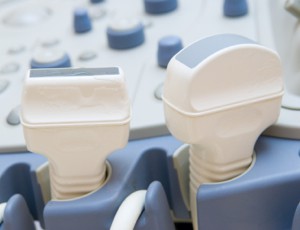
Reminding about the properties of the isosceles right triangle might be of interest to teach young fellows a secure step by step technique for vessel catheterization” Piton et al (2018). Extract: “Vascular access is routinely performed by critical care physicians and the use of ultrasonography is recommended [1]. However, complications during vessel puncture are not […]
Impact of urgent start intermittent peritoneal dialysis on CLABSI rates
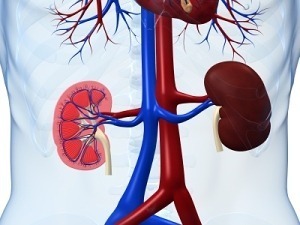
Noncuffed catheters (NCC) are often used for incident hemodialysis (HD) patients without a functional vascular access. This, unfortunately results in frequent catheter-related complications such as infection, malfunction, vessel stenosis, and obstruction, leading to loss of permanent central venous access with superior vena cava obstruction” Shanmuganathan et al (2018). Abstract: BACKGROUND: Noncuffed catheters (NCC) are often […]
Effects of perioperative fluid management on postoperative outcomes in liver transplantation

We will conduct a systematic review aimed at evaluating the effects of restrictive perioperative fluid management strategies compared to liberal ones on clinically significant postoperative outcomes” Carrier et al (2018). Abstract: BACKGROUND: Liver transplant recipients suffer many complications, but few intraoperative interventions supported by high-quality evidence have been found effective to reduce their incidence or […]
Ultrasound use in neonatal peripheral intravenous extravasation injuries

The primary aim of this study was to examine and describe peripheral intravenous extravasation (PIVE) injuries using point-of-care ultrasound (POC-US). A secondary aim was to define skin tissue changes before and after hyaluronidase application using POC-US” Boyar et al (2018). Abstract: PURPOSE: The primary aim of this study was to examine and describe peripheral intravenous […]
Home parenteral support in patients with incurable cancer

It is uncertain if home parenteral support (HPS) is of advantage in patients with incurable cancer and intestinal failure, functional obstruction or severe malabsorption” Obling et al (2018). Abstract: PURPOSE: It is uncertain if home parenteral support (HPS) is of advantage in patients with incurable cancer and intestinal failure, functional obstruction or severe malabsorption. From […]
Impact of health insurance in the early stages of hemodialysis and vascular access

Patients without Medicare who develop ESKD in the United States become Medicare eligible by their fourth dialysis month. Patients without insurance may experience delays in obtaining arteriovenous fistulas or grafts before obtaining Medicare coverage” Lin et al (2018)”. Abstract: BACKGROUND AND OBJECTIVES: Patients without Medicare who develop ESKD in the United States become Medicare eligible […]
Guidewire problems during central venous catheter placement

CVC placement was confirmed via plain radiography of the chest Even a flexible guidewire can penetrate the IJV at posterior wall if a puncture needle tip is positioned near the posterior wall Longitudinal ultrasonographic imaging of guidewires can help physicians avoid misplacing dilators” Yamasaki et al (2017). Abstract: A 58-year-old man (height, 160.5 cm; weight […]
Case of living donor liver transplantation complicated by central catheter thrombosis

We encountered a case of thrombosis developing on the sixth day after surgery, in a patient with a PreSep Central Venous Oximetry Catheter™ placed in the internal jugular vein” Shiba et al (2016). Abstract: Central venous catheter-related infection and thrombosis frequently occur, leading to serious complications in some cases. We encountered a case of thrombosis […]
Implantable ports for prophylactic RBC exchanges in sickle cell patients
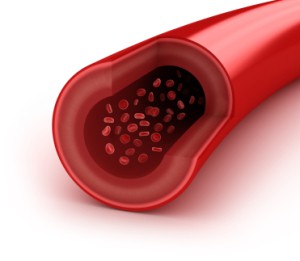
Red blood cell exchange (RCE) procedures are commonly used for stroke prevention in sickle cell disease (SCD) patients. We compared two different dual lumen ports used for RCE because differences between the port and catheter design may lead to functional variance” Lawicki et al (2018). Abstract: INTRODUCTION: Red blood cell exchange (RCE) procedures are commonly […]
Point of care ultrasound in localizing central venous line tip position

The primary objective was to study agreement between X-rays and point of care ultrasound (POC-US) in determining central venous line (CVL) tip position” Zaghloul et al (2018). Abstract: The primary objective was to study agreement between X-rays and point of care ultrasound (POC-US) in determining central venous line (CVL) tip position. The secondary objective was […]
Central line maintenance bundle for dislodgement and infection prevention

Although research has shown frequent, scheduled dressing changes using the chlorhexidine patch decreases infection rates, the risk of dislodgement and skin breakdown for NICU infants outweighs the potential benefit of decreased infection” Short (2018). Abstract: BACKGROUND: Infants in the newborn intensive care unit (NICU) often receive medications or nutritional support for extended periods. Due to […]
What is the impact of home parenteral nutrition on hospital re-admission

Unplanned re-admissions for patients with IF accounted for a third of all hospitalisations in those on HPN and the majority were due to CRBSI” Burden et al (2018). Abstract: INTRODUCTION: Home parenteral nutrition (HPN) provides fluid and nutrition essential for the survival of patients with type 3 intestinal failure (IF). However, it is associated with […]
An example of hospital-wide surveillance of central line-associated bloodstream infections

CLABSIs are less common in general wards than in ICUs, but they are more often associated with long-term indwelling catheters. Therefore, interventions to prevent CLABSIs should be tailored according to the type of ward and type of catheter” Seo et al (2018). Abstract: BACKGROUND: Surveillance and interventions of central line-associated bloodstream infections (CLABSIs) had mainly […]
Outpatient parenteral antimicrobial therapy guidelines from the IDSA

A panel of experts was convened by the Infectious Diseases Society of America (IDSA) to update the 2004 clinical practice guideline on outpatient parenteral antimicrobial therapy (OPAT)” Norris et al (2018). Abstract: A panel of experts was convened by the Infectious Diseases Society of America (IDSA) to update the 2004 clinical practice guideline on outpatient […]
Near-eye display to assist ultrasound guided central venous cannulation
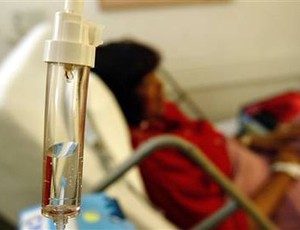
Because head-mounted display can provide the visualized information without moving direction of eye- sight, ultrasound guided central venous cannulation might be performed more quickly and safer” Kasuya et al (2018). Abstract: BACKGROUND: Recently several types of head- mounted displays are available for use in the medical field. Because head-mounted display can provide the visualized information […]
Guidelines for the safe practice of total intravenous anaesthesia

Guidelines are presented for safe practice in the use of intravenous drug infusions for general anaesthesia. When maintenance of general anaesthesia is by intravenous infusion, this is referred to as total intravenous anaesthesia” Nimmo et al (2018). Abstract: Guidelines are presented for safe practice in the use of intravenous drug infusions for general anaesthesia. When […]
Single-needle peripheral vascular access in therapeutic plasma exchange
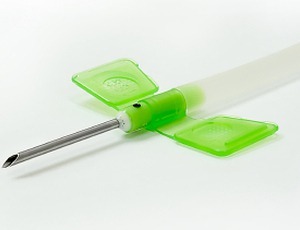
At our center, we prefer to use peripheral venous access to avoid central line-related complications, especially infection” Doggett et al (2018). Abstract: Apheresis treatments, which involve the removal of a component of blood, generally require one access and one return line to continuously draw and return blood into the extracorporeal circuit. At our center, we […]
What is the cost of unsuccessful short peripheral catheter placement?

Peripheral intravenous therapy is an established therapy with known complications and failures. The burden of the cost of unsuccessful short peripheral catheter (SPC) placement and maintenance is not always clearly identified” Jones (2018). Abstract: Peripheral intravenous therapy is an established therapy with known complications and failures. The burden of the cost of unsuccessful short peripheral […]
Implementation of smart pump technology with home infusion providers

While hospitals have adopted smart pump technology (SPT) featuring drug libraries and medication safety software, most home infusion providers (HIPs) continue to use traditional infusion pumps that don’t offer drug libraries or medication safety software” Brown et al (2018). Abstract: While hospitals have adopted smart pump technology (SPT) featuring drug libraries and medication safety software, […]
An example of how to improve peripheral vascular access outcomes

This study examined PIVC practice-related metrics before and after a comprehensive process improvement program, which included a change to closed catheter technology” Platt and Osenkarski (2018). Abstract: With most hospitalized patients requiring peripheral intravenous catheters (PIVCs), PIVC-related process improvement may substantially affect the health, safety, and satisfaction of patients and health care workers, in addition […]
Comparison of standard short peripheral catheters versus a power injectable version
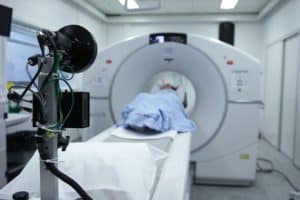
…compared the use and outcomes of standard SPCs (nonfenestrated) versus a power injectable SPC (fenestrated with 3 side holes distal to the catheter tip)” Pohlod (2018). Abstract: To perform high-resolution computed tomography and magnetic resonance imaging angiographies, contrast typically is rapidly injected through a 20-gauge or larger short peripheral catheter (SPC). Intravenous access in infants […]
Does the use of an infusion pump for red blood cells increase hemolysis?
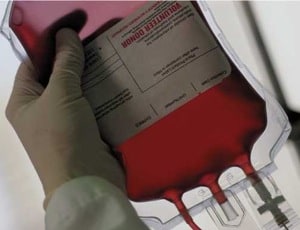
Transfusions of red blood cells (RBCs) are frequently administered for a variety of clinical conditions. The use of an infusion pump has become common practice in nursing” Centrella-Nigro et al (2018). Abstract: Transfusions of red blood cells (RBCs) are frequently administered for a variety of clinical conditions. The use of an infusion pump has become […]
Pinch-off syndrome associated with totally implantable venous access device

Pinch-off syndrome (POS) is a rare complication after totally implantable venous access device (TIVAD) implantation. In cancer patients, it is important to prevent this rare complication and to recognize it early if it does occur. We present a case series of POS after TIVAD implantation and the results of a literature search about this complication” […]
Is a discard phlebotomy tube necessary for P-Ionized calcium analysis?
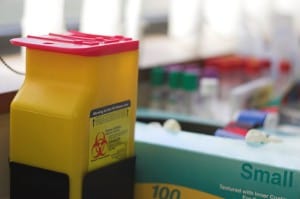
Our study has shown no significant difference between P-Ionized Calcium (pH adjusted = 7.4) values for the first and second tubes. Hence, the use of a discard tube is not required” Novakovic et al (2018). Abstract: BACKGROUND: Deviation in blood collection procedures is a central source of preanalytical variation affecting overall analytical and diagnostic precision. The procedure […]
Central catheter fibrin sheath infection treated with percutaneous vacuum assisted thrombectomy
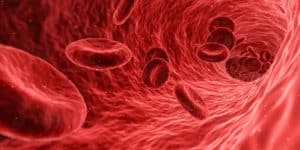
We present the case of a patient with infection of a retained catheter-related fibrin sheath, a rarely described form of CRBSI, who was successfully treated with percutaneous vacuum-assisted thrombectomy” Choi et al (2018). Abstract: Central venous catheters (CVCs) have become commonplace in modern clinical practice. Despite their myriad benefits, they are associated with a host […]
Intraosseous access to administer 23.4% NaCl in the emergency setting

Intraosseous catheterization is an alternative route of venous access that may result in more rapid administration of 23.4% NaCl” Wang et al (2018). Abstract: BACKGROUND/OBJECTIVE: Prompt treatment of acute intracranial hypertension is vital to preserving neurological function and frequently includes administration of 23.4% NaCl. However, 23.4% NaCl administration requires central venous catheterization that can delay […]
Long-term study reviews infective vascular access outcomes associated with home parenteral nutrition

The aim of this study was to evaluate catheter-related complications of CVC in patients receiving HPN” Santacruz et al (2018). Abstract: OBJECTIVE: Home parenteral nutrition (HPN) has become a common therapy, with tunneled central venous catheters (CVCs) being the preferred route of administration. Peripherally inserted central catheters (PICCs) have been used increasingly, but whether they […]
Natural history of asymptomatic central venous catheter-related thrombosis

Asymptomatic central venous catheter (CVC)-related thrombosis in children varies in incidence from 5-69%” Jones et al (2018). Abstract: Asymptomatic central venous catheter (CVC)-related thrombosis in children varies in incidence from 5-69%. The rate of acute and long-term complications, such as Post Thrombotic Syndrome (PTS), from asymptomatic CVC-related thrombosis is unknown. This paper reports the outcomes […]

